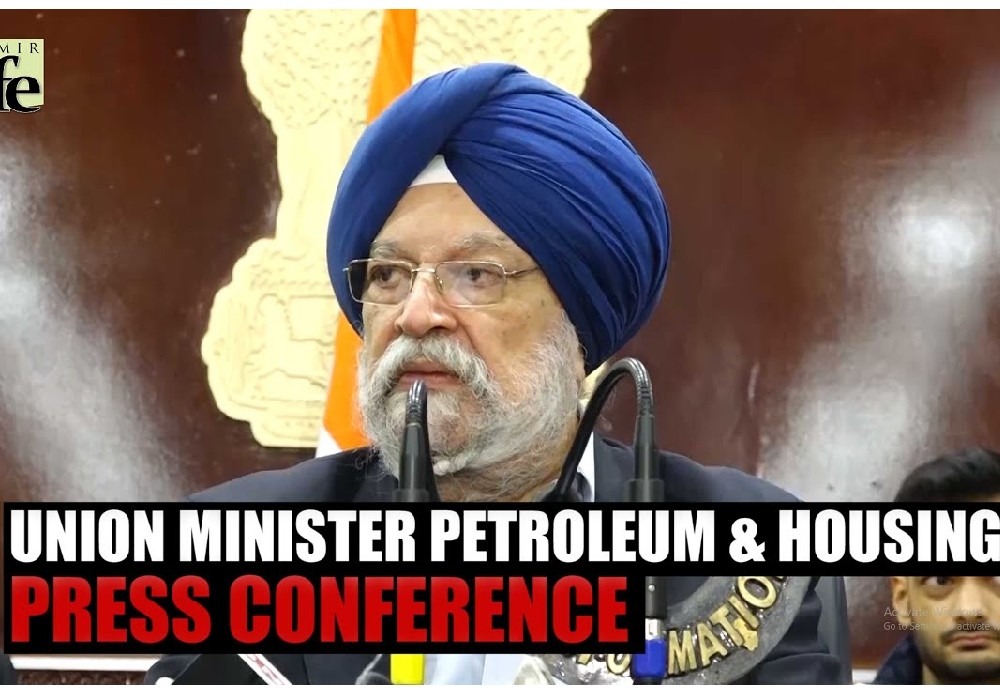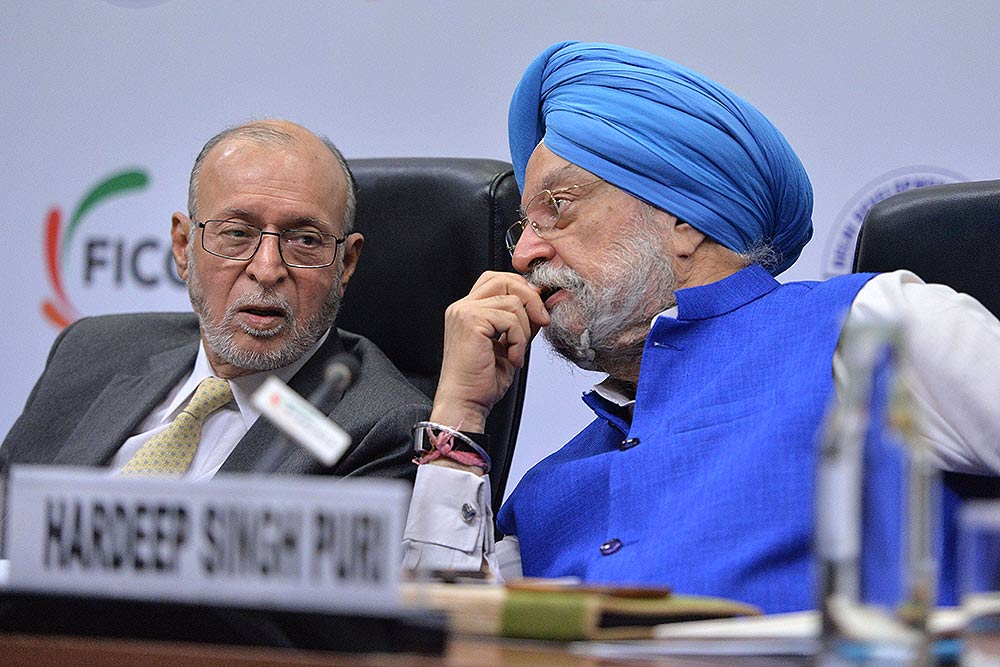Earlier this week, the Hon’ble Prime Minister of India Shri Narendra Modi inaugurated India’s flagship energy event, the India Energy Week 2023 in Bengaluru, with the theme ‘Growth Collaboration Transition’ in presence of more than 35 energy Ministers, CEOs, and captains of the world’s leading energy companies, 650+ global exhibiting companies across 10 exhibiting international pavilions and host over 500 speakers and delegates from more than 100 countries.
IEW 2023 also hosted the 9th Asian Ministerial Energy Roundtable and the G20 Energy Transition Working Group meeting under India’s presidency which saw an MoU between India and the Indonesia-Malaysia-Thailand Growth Triangle Joint Business Council to further promote the adoption of energy efficiency and sustainable practices in the region.
IEW 2023 marks a turning point in the global energy economics, when a nation which is both the world’s fastest-growing major economy – IMF has estimated India’s GDP growth rate in 2023 at 6.1%, compared to the global rate of 2.9% and US rate of 1.4% -, and projected to be its largest energy consumer in the decades to come – India is expected to witness the largest increase in energy demand globally, registering a rise of 25% over the period between 2020 and 2040, as per the International Energy Agency – has taken the lead in clean energy transition for almost 18% of the global population, i.e., more than 1.4 billion people.
What is even more remarkable is that India seeks to undertake this mammoth clean energy transition, perhaps one of the largest in human history, while also undergoing a dramatic growth in socio-economic standards and living conditions for the world’s largest sovereign population. India has already pledged to become net-zero in emissions by 2070 and cut down the emission by 1 billion tons by the end of 2030. These commitments come despite India’s historical contribution to global emissions (since 1890) is about 4%, despite being the 5th largest economy and home to 17% of the world’s population and despite India’s per capita emissions ranking lowest amongst the G20 countries and about half of the global average.
The Indian economy, which has shrugged off the headwinds of war and the pandemic, has seen an unprecedented phase of growth under the present administration. India has leapfrogged from being the world’s 10th biggest economy to the 5th biggest in just 9 years. We have doubled our per capita income from USD 1208 in 2014 to USD 2381 in 2023. Morgan Stanley estimates that India’s GDP is likely to surpass US$ 7.5 trillion by 2031. Our recent Union Budget laid special emphasis on India’s climate change efforts, green energy transition and energy security. ‘Green Growth’ was highlighted as one of the saptarishis (seven focus areas) for the country and allocated 4.23 billion USD for priority capital investments towards energy transition & net zero objectives, and energy security, and made significant policy changes for accelerating outcomes.
As I have often said before if the energy transition is to be enduring and stable the accessibility and affordability aspects of energy must remain intact. India’s share in global oil demand is expected to double from 5% to and 11%, our gas demand is expected to increase by 500 percent in the coming decades. Just as we had met our COP-21 Paris Agreement commitments and taken the lead in co-launching the International Solar Alliance, the Indian Government has formulated a clear four-plank energy strategy for meeting the Prime Minister’s ‘Panchamrit’ (five-point) climate change commitment at COP-26 Glasgow. I want to reiterate the fact that in keeping with the Prime Minister’s ‘LiFE’ (Lifestyle for Environment) and India’s G20 motto ‘Vasudhaiva Kutumbakam’ (the world is one family) mantras, India has chosen low carbon pathways to transition as its long-term strategy. A case in point is the launch of ‘Unbottled’ at IEW 2023, which is the world’s largest initiative in the world to reuse and recycle 100 million PET bottles per year.
As we look to attain a reliable, balanced, and futuristic fuel mix, Green Hydrogen, Natural Gas and Biofuels will remain important pillars of India’s energy strategy. IEW 2023 witnessed the launch of E20, i.e., 20% ethanol blended gasoline by the Indian Prime Minister, which will be rolled out in 15 cities and expanded across the country in the next two years.
The event also saw the launch of a patented stationery, rechargeable and always kitchen-connected indoor solar cooking system developed by IOCL, one of India’s largest petroleum companies, which is expected to be deployed in 30 million households in the next two-three years. Both the E20 and IOCL’s Solar Cooktop witnessed an enthusiastic response from the South-South Cooperative who were keen to learn from India’s innovation and deployment; and indicative of immense potential for these ‘Made in India’ technologies to address key energy requirements of developing nations across the world.
India’s ethanol blending gasoline has grown from just 1.53% in 2013-14 to 10.17% in 2022, and now India is also setting up 2nd generation ethanol which can convert agricultural waste into Biofuel, further reducing pollution due to stubble burning and generating income for needy farmers.
India also expressed its commitment to set up an International Biofuels Alliance during the G20 Energy Transition Working Group alongside the IEW 2023, which has drawn interest from many nations and could provide an important energy transition pathway for agricultural economies.
India is also accelerating its efforts to move towards a gas-based economy by increasing the share of gas from the current 6.3% to 15% by 2030. To this end, massive infrastructure to the tune of USD 60 billion is underway in creating gas infrastructure till 2024, including pipelines, LNG terminals and CGD networks. India is setting up 5000 Compressed Biogas (CBG) and has undertaken many policy measures to incentivize this ‘Waste to Wealth’ initiative for promoting a circular economy. India has connected more than 19 crore families with clean cooking fuel in the past nine years.
Perhaps one of the biggest showcases of India’s energy policy in the US has been the Indian Government’s all-out efforts to woo investors to deploy capital and resources in its Exploration & Production sector. India has set a target to increase its net geographical area under exploration from 8% (0.25 million sq. km) to 15% (0.5 million sq. km) by 2025 and has undertaken a slew of facilitative measures for the benefit of Upstream operators. India has reduced the prohibited/no-go areas in our Exclusive Economic Zone (EEZ) by 99%, i.e., releasing 1 million sq. km. for exploration, carried out the National Seismic Program (NSP) and established the National Data Repository (NDR) for making available E&P data on an Artificial Intelligence-enabled cloud platform. In a huge development, YPF SA, Argentina signed an MoU with ONGC Videsh, India’s premier international E&P organization on the sidelines of IEW 2023.
Reaffirming our energy strategy to boost domestic hydrocarbon production, and clean energy transition, the renewable energy capacity in India has increased from about 70 GW to about 170 GW in the last nine years. The solar power capacity has also increased more than 20 times. Today India ranks fourth in the world in terms of wind power capacity. We have allocated USD 1.2 Billion per year toward the renewable energy sector, and USD 2.38 Billion towards our National Green Hydrogen Mission which targets a Green Hydrogen annual production capacity of 5MMT by 2030. There are investment possibilities worth more than USD 96 Billion in this sector, as India seeks to increase its share of Global green hydrogen production to 25% in the next five years by replacing grey hydrogen. We are also supporting Electric Vehicles through a Production Linked Incentive scheme worth more than USD 2.17 Billion to make advanced chemistry cells of 50 Gigawatt hours and have announced Viability Gap Funding and customs duty exemptions for the sector.
India’s energy strategy will fulfil India’s exponential growth in energy demand, whilst keeping energy accessible and affordable, protecting India’s energy security and at the same time leading the global transition to clean energy. India Energy Week 2023 marks the first major energy flagship event of India’s energy strategy and is a global platform for climate change mitigation goals, whilst staying true to an energy agenda which is inclusive, market-based, and climate-sensitive.

देश में एक करोड़ यात्री प्रतिदिन कर रहे हैं मेट्रो की सवारी: पुरी ..

Union Minister for Petroleum and Natural Gas and Housing and Urban Affairs, Hardeep Singh Puri addressing a press conference in ..

Joint Press Conference by Shri Hardeep Singh Puri & Dr Sudhanshu Trivedi at BJP HQ| LIVE | ISM MEDIA ..
(3).jpg)
"I wish a speedy recovery to former Prime Minister Dr Manmohan Singh Ji. God grant him good health," Puri wrote. ..